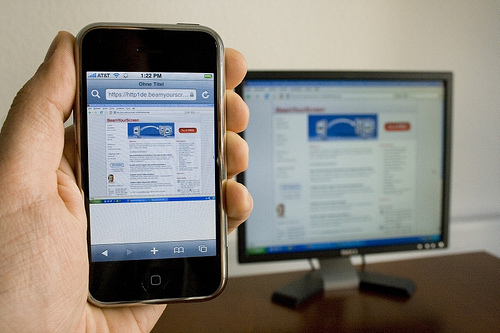
By Amalia Deloney, The Center for Media Justice
If you’re like most people, you probably have no idea how fast the data access is on your smartphone. Or, you may have an idea—but its largely informed by what the carriers and advertisements tell you.
But can we count on that?
Now, the FCC wants to know. On Wednesday, the FCC announced it has plans to“measure the performance of wireless broadband services across the country” in a program called Measuring Mobile America. Cute.
Alliteration aside, the test results could be interesting. Turn on your TV, read a magazine, or walk through a mall and you’re bombarded with ads by wireless carriers bragging about the speed and/or coverage area of their network. But how accurate are these statements? If the results are anything like the “Measuring Broadband America” test (a similar test that looked at wired Internet speeds) then actual speeds might be only 80-90% of the advertised speed—i.e. what you’re paying for. Hmm, that’s not exactly “you get what you pay for.”
The carriers argue this is due to factors like nearby physical structures, distance from a cell tower, the time of day, the number of users connecting at the same time or even whether you’re inside or outside. No doubt there is some truth to this. But what is also true is that 1) the art of sale involves a great deal of manipulation and 2) advertisements are routinely full of exaggerations, over-statements and incomplete information. Couple this with the realization that broadband access is now a necessity for everything from education and healthcare to employment and public safety—and you begin to understand why so many people are paying for faster speeds at higher prices.
While this is an issue for fixed Internet—the potential harm to communities of color is even greater on wireless. Often due to price, nearly 18% of blacks and 16% of Latinos use cell phones as their only means of Internet access. Most people don’t see this as a problem. This is largely because the public narrative has shaped a story whereby communities of color are cast as the ‘leading adopters of new mobile and social media technologies’ and described as ‘leapfrogging’ over fixed broadband.
In other words, we’re hip and cool and people should buy the things we buy. How’s that for played out advertising stereo-types?
Although aspects of this story are flattering—it’s also an incomplete and dangerous characterization that overlooks the role that predatory pricing, low digital literacy, redlining, and censorship play in our Internet experience. Are we really choosing wireless as our exclusive on-ramp? Or, have we been pushed onto a second-class platform—separate and unequal? At CMJ, we’d say the latter. In fact, with MAG-Net we’ve been saying that all along.
The FCC is planning an open meeting on Sept. 21, to discuss the new program—we’ll be keeping an eye on what happens, and we hope you do to. With wages at an all-time-low and the racial wealth gap at an all-time-high, our communities cannot afford to pay for speed they aren’t getting. Especially, when it’s the only access point to the Internet for so many of us.
This originally appeared on Center for Media Justice’s blog.
[Image Via mikogo]






